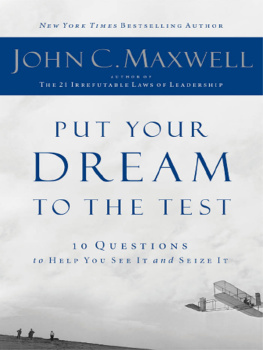Copyright 2015 by Dinty W. Moore
All rights reserved.
Published in the United States by Ten Speed Press, an imprint of the Crown Publishing Group, a division of Penguin Random House LLC, New York.
www.crownpublishing.com
www.tenspeed.com
Ten Speed Press and the Ten Speed Press colophon are registered trademarks of Penguin Random House LLC.
Several of the essays in this work were previously published, some in very different form, in Arts & Letters, Blip, Gulf Coast, Iron Horse Review, and Knee-Jerk. The author extends his sincere gratitude to the editors of these journals.
Of Bums first published as a Roundtable in Fourth Genre: Explorations in Nonfiction (Vol. 11, No. 1, Spring 2009), published by Michigan State University Press, East Lansing, MI.
A Striped Essay first published as Of Striped Food and Polar Bears in TriQuarterly , a publication of Northwestern University, Chicago, IL.
Grateful acknowledgment is made to the following for permission to reprint previously published material:
The Normal School : Mr. Plimptons Revenge, copyright 2008 by Dinty W. Moore. First published in The Normal School (Vol. 2, Issue 2). Reprinted by permission of The Normal School , a division of the University Press, California State University, Fresno, CA.
The University of Nebraska Press: Four Essential Tips for Telling the Truth in Personal Memoir and Securing That Blockbuster Book Deal from Blurring the Boundaries: Explorations to the Fringes of Nonfiction, edited by B. J. Hollars, copyright 2013 by the Board of Regents of the University of Nebraska. Reprinted by permission of the University of Nebraska Press.
Writers Digest Books: Pulling Teeth from Crafting the Personal Essay: A Guide for Writing and Publishing Creative Nonfiction, by Dinty W. Moore, copyright 2010 by Dinty W. Moore. Reprinted by permission of Writers Digest Books.
Library of Congress Cataloging-in-Publication Data
Moore, Dinty W., 1955
Dear mister essay writer guy : advice and confessions on writing, love, and cannibals / Dinty W. Moore. First edition.
pages cm
Includes bibliographical references and index.
1. EssayAuthorship. 2. Creative nonfictionAuthorship. I. Title.
PE1479.A88M67 2015
808.042dc23
2014041448
Hardcover ISBN: 978-1-60774-809-0
eBook ISBN: 978-1-60774-810-6
Front cover image by iStock.com/elapela
v3.1
To the
Polar Bears.
Be gentle with me.
CONTENTS
Is Truth stranger than Fiction? This is a
question that has half the world at loggerheads
and the other half at sixes and sevens.
ROBERT BENCHLEY
What do I know?
MICHEL DE MONTAIGNE
INTRODUCTION
Perhaps you are standing in the bookstore, scanning this introductory chapter, wondering just what sort of book you have in hand. You are a good-looking person whose minor flaws seem to only accentuate your considerable charm. You are intelligent. And immune to flattery.
Moreover, you admire those who are plain-spoken, so let me be entirely forthright:
This is the most important book ever published, except for a very old book that Moses started writing back in 800 BCE, one that a bunch of saints and raggedy disciples had to finish for him over the next thousand years.
Talk about missing a deadline! Boy, his editor must have been mighty ticked off.
In any case, that other book is all well and good, but it rapidly bogs down in questions such as how many goats must be slaughtered to atone for beheading your eldest son and who begat whom.
Good stuff if you are a theologian, but stop to think a moment: are you a theologian?
Probably not.
The book you are holding here tackles more urgent questions, questions more relevant to the modern reader, questions such as What is the essay? And why? And how ought we to feel about it, given that there is nothing on television this evening?
To that end, I have reached out to contemporary essayists such as Phillip Lopate, Cheryl Strayed, Diane Ackerman, Lee Gutkind, Steve Almond, Lia Purpura, Ander Monson, and a host of other fine writers, many of whom are close friends with Oprah Winfrey. I asked each of them to send me a question about the contemporary essay, in an attempt to once and for all settle the burning question: who reads this stuff?
My inspiration here is the sixteenth-century French nobleman and father of the essay form Michel de Montaigne. He broke literary ground by writing mainly of the self, bravely admitting to the reader, I cannot keep my subject still. It goes along befuddled and staggering, with a natural drunkenness.
Drunkenness, befuddlement, the occasional staggering. Whats not to like?
For those of you who have wondered, by the way, the name Montaigne is pronounced this way: Montaigne.
So this is a Writing Guide of sorts, but since the true arc of the essay is the authors thoughts moving on the page in a compelling fashion, this is also a Thinking Guide. If you have trouble thinking, this is the book for you!
Enjoy yourself. Consider reading passages aloud to your spouse or partner, or just slither up to a complete stranger at the corner coffee shop and let loose a chapter or two. Youll find yourself making lifelong friends that way.
And afterward, if you have questions, or are wondering where to send flowers, feel free to contact me (). I do so look forward to hearing from you.
Sincerely,
Dinty W. Moore
aka Mister Essay Writer Guy
Dear Mister Essay Writer Guy,
I am curious how you deal honestly with male-female relations in general and specifically your past girlfriends on the page without coming off as a male chauvinist pig.
Looking for guidance,
Phillip Lopate
New York, New York
Dear Phillip,
What an excellent question. Do I have to answer it? Yes, I suppose I do, since you were kind enough to pose the question, and since Ive decided to feature it as the first question in this book. It would be odd, I suppose, to just blow right by.























